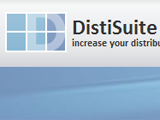How effectively do you assess the value of your website? Analytics -- or, web statistics -- are pieces of data collected as visitors browse your website. Proper Analytics go well beyond a simple report of "hits" and "visitors", with information about geographic region, time spent on a page, referring websites, and much more. Though oft underused by small-to-midsized businesses, Analytics are critical to understanding strengths, weaknesses, and opportunities to improve the performance of your website. Effective use of analytics makes investment in a website an extremely measurable form of marketing.
There are a number of popular web analytics packages that can be used to track web statistics, like StatTracker, ClickStream, and Site Meter. Google Analytics is arguably the best, is free, and integrates nicely with Google Adwords. We provide Google Analytics to our clients, and it captures a vast array of information that can be filtered, viewed, and exported with ease. By using Google Analytic's ecommerce options, you can also track revenue/visitor and conversion rates from various sources.
It is extremely important to spend time (at least) monthly analyzing website performance. Here are four key metrics that provide great insight:
1. Most popular pages identifies the content potential customers find most interesting/useful, and helps distinguish effective methods to apply when creating new pages.
2. Most popular landing pages shows the most common pages where visitors first arrive at your website. A visitor typically reaches a landing page by typing it directly into a browser or linking to it in paid or unpaid search engine results. Determining which pages people use to enter your website most often will help you repeat that success with new pages.
3. Most popular exit pages can help determine which pages on your site most often lead to a visitor abandoning it. This is important because it can help determine which pages may not be useful or engaging enough to keep customers interested. Pages with excessive exits should be reworked to address these issues.
4. Number of visits per order/dollar shows the revenue performance of your website in terms of online orders. In this industry there are no hard bench marks since businesses vary, but the most important thing is to spot trends. As you provide a better experience for your customers, the number of orders & dollars per visitor should trend up. If trends are not improving, then digging deeper into your analytics can typically help you determine why you hit a dip in your website's effectiveness. In the absence of online ordering, other "goals" can be used to track conversion success, like RFQ submissions.
Once you get comfortable with assessing statistics, you will be begin to see more and more complex ways to look at the data to gain insight. Just remember -- the point of all of this is to make your data tell a story. In the same way you put together meaningful combinations of financial numbers every quarter, you can do the same with your website to help you understand where you stand now, and what you can improve moving forward.
Every day, more customers in electronics distribution are turning online to do their research and find their suppliers. A business presence on search engines like Google or Yahoo! is absolutely crucial to connect with new customers. Positioning your website to appear in search engine results should be a top priority. In this newsletter, I will talk about methods to gain presence in search engines, and how the game has completely changed over the last decade.
Many business owners think search engine marketing is all about tactics. They think there are tricks to the trade; ways to fool Google, Bing, and others into putting your website at the top of the list. To be fair, 5-10 years ago that largely the case...there were tricks that could catapult a website to the top. But everything has changed. The reality today is that search engines are very smart and businesses that rely on tricks are going to be left in the dust.
Today, search engine marketing is about content. Modern search engines understand what information *means*. Search engines relate connected pages, and determine whether the information is actually useful. All of this adds up to one novel idea: The single most effective way to make a website more relevant in the eyes of a search engine is to make it more relevant in the eyes of a human. After all, search engines are built for the end goal of delivering quality content to people.
So how do you make a website more relevant to a person? Well, you start by concentrating less on technical optimization, and more on what you would want to see if you were the customer. In other words, build a useful website, and the rest will fall into place.
But still, you ask, where do you start? What exactly makes a website "useful"? An effective website clearly states its purpose, provides detailed and helpful information, and helps people easily navigate to the information they seek. For a B2B distribution website, this means:
- Provide inventory information on your website, and organize it by manufacturer and category.
- Create effective landing pages for customers at your website. A landing page acts as a starting point for customers with a particular interest, like a specific category of products or a certain supplier. These areas clearly explain customer options, and provide guidance to help customers make decisions and find more detailed information. Search engines love landing pages for the same reason your customers will -- they are clear, useful, and connect people with the other pages on your website that contain the more detailed information they really seek.
- Provide as much detail about products as possible. Include images and datasheets.
- Routinely update a news section on your website to announce new lines, products or anything else you'd like to share with the world. Each post should contain links to any relevant landing pages or product pages throughout your site.
Here's the bottom line: You can build a website that is useful for your customers, while also increasing your search engine reach. These two objectives are more aligned than ever before. Of course, there are still very important technical aspects to consider when creating an effective website, but content is more important than ever before.
DistiSuite is a provider of websites and website solutions for distributors in the electronics industry. Contact us for more information about creating a new website, or expanding your existing website to enhance your online market presence and services.
There is a misconception among electronics distributors that the transition to eCommerce is a one step process - that their entire inventory, complete with pricing and detailed data, must be a part of their eCommerce website from square one. This is not the case. Besides making the transition more manageable, there are clear benefits to gradually filling out your eCommerce website over the course of several months.
Let's start with an example. Joe, the owner of ZYX Electronics, knows online selling would be a great way to open his business up to new opportunities. Like most distributors, however, Joe is not prepared to sell directly online from day one. He needs to develop price breaks and more detailed product specs. Undaunted, Joe begins building his website with the inventory information he already has - part numbers, quantities, manufacturers, and some basic specs - even though he cannot offer any of his inventory for direct web sale yet. While Joe spends the next few months developing prices and grabbing datasheets, he is surprised to find that more and more prospective customers are finding his website and calling his business. Joe's business is beginning to show up in Google search results for parts and manufacturers in his inventory, and his website is beginning to yield results without even offering a single item for sale.
A website without pricing information can still drive new business. Your inventory data - even when incomplete - is a gold mine of relevant keywords. Adding keyword-rich information on your website greatly increases your chances of appearing in search results - and can drive promising customers straight to your business. When information is added to your website, and organized in the right way, search companies like Google will crawl your website and collect that information. In this way, your website will be more likely to appear when people search for parts, manufacturers, or other relevant information you have stored in your inventory. Search engine results are a key factor of web success, and cannot be provided by other web channels like listing websites and stock checking services.
We present DistiSuite as a sales tool - and it is - but it is also a marketing tool. We have built a system that focuses on the power of search engines to attract new customers to distributors. We help our clients make the most of the information in their inventories, however limited. Electronics distributors agree: Online selling is an increasingly valuable means to generate new relationships and revenues. Rather than feeling daunted by the end goal, think about the benefits of a gradual approach to online sales.
No business owner wants to spend resources without the right return on investment. For electronic component distributors, the
benefits of eCommerce must outweigh the costs. In previous newsletters I've written about important aspects of eCommerce, but this newsletter is about results:
The experience of our DistiSuite clients, small-to-midsized electronic component distributors. I will break down some statistics for your consideration. The numbers may surprise
you.
First, some notes about the industry in general. Industry magazines and conferences are eager to talk about the increasing role of eCommerce in the
marketplace, and many larger companies have dedicated entire departments to handling their eCommerce website and strategy. Where does this leave the businesses
without resources to create an "eCommerce staff"? Where does this leave the small-to-midsized distributor?
Because
of its apparent cost and complexity, many smaller EDs have avoided eCommerce altogether. Some believe eCommerce to be contradictory to their unique strengths --
particularly, long-term customer relationships. This is a mistake. Would it make sense to never use email because phone
calls are more personal? Of course not - a sales website is simply another way to communicate with customers, and to provide the service and information they
expect. With a solution like DistiSuite finally in the mix, the real question becomes - How much revenue does your business lose
by ignoring eCommerce?
Let's look at some numbers. Our DistiSuite system costs a certain fixed amount to install, and then an ongoing monthly
rate. Because of this installation cost, the total costs for the first year would be higher than subsequent years where only the monthly rate applies. For our top
25% performing clients, here are the statistics:
- Non-installation year, where clients are only paying their monthly rate:
- Revenue-to-cost ratio: 91 to 1
- In other words, these clients averaged $91 of revenue for every $1 spent on DistiSuite annually.
- Including installation cost this year:
- Revenue-to-cost ratio: 21 to 1
Because some revenue opportunities occur outside our system, there are likely even more revenues
generated via DistiSuite. Our top performing clients average over 400 new web-registered customers every year. Those new
customers may start with small orders on the web, but as that business relationship develops may begin calling our client direct with larger volume orders.
What about our bottom 25% performing clients? These are the clients who typically have been with us at DistiSuite a shorter period of time, perhaps wanted to
integrate just our inventory management and shopping system into their existing website (cutting out our search-engine friendly infrastructure), and foregoing any
search engine marketing. The numbers are still great:
- Non-installation year, where clients are only paying their monthly rate:
- Revenue-to-cost ratio: 20 to 1
- Including installation cost this year:
- Revenue-to-cost ratio: 7 to 1
The average client in our bottom 25% of performance has only been with us at DistiSuite for 9
months. Although these numbers are certainly respectable, the difference with our top performers shows why we advocate search
engine marketing. Most electronic component distributors take simple steps to work with us and optimize their search engine traffic, and are happy with how
markedly it impacts their bottom line.
Because every business is unique, and there are so many factors involved, we of course cannot guarantee results. It
is clear, however, that eCommerce is increasingly important in this market. Online sales in this industry will only continue to grow, and provide new opportunities
for revenue streams and customer relationships. We at DistiSuite have focused on this sector because we know how valuable and important eCommerce can be for small-
to-midsized distributors, and we welcome you to contact us to discuss the specific needs of your
business.
Notes:
The statistics presented above are based on DistiSuite pricing as of August 2008.
Because every client is unique and many factors can affect results , these statistics merely describe trends among existing DistiSuite clients, and in no way
guarantee similar performance.
 How can you keep an online inventory in sync with your business? Your product data - quantities, pricing, part listings - are constantly changing. It is essential that a sales website properly reflect the most up-to-date information. For electronics distributors considering new revenue opportunities on the web, effective inventory management should be a key concern.
How can you keep an online inventory in sync with your business? Your product data - quantities, pricing, part listings - are constantly changing. It is essential that a sales website properly reflect the most up-to-date information. For electronics distributors considering new revenue opportunities on the web, effective inventory management should be a key concern.
 Generic eCommerce packages require manual updates to your online inventory. That may make sense for a business with only a couple hundred product listings, but most distributors carry thousands of parts in inventory. Efficiently updating information for such a volume of parts is nearly impossible with a manual system. Though a generic eCommerce system may have an attractive price tag, the expense skyrockets when you add in number of administrative hours and headaches spent keeping the system up-to-date.
Generic eCommerce packages require manual updates to your online inventory. That may make sense for a business with only a couple hundred product listings, but most distributors carry thousands of parts in inventory. Efficiently updating information for such a volume of parts is nearly impossible with a manual system. Though a generic eCommerce system may have an attractive price tag, the expense skyrockets when you add in number of administrative hours and headaches spent keeping the system up-to-date.
At the other end of the spectrum are integrated eCommerce solutions. These are systems that integrate with your business's inventory database in real time, typically offered as a package by your inventory software provider. This will keep your website in sync with your inventory software, although there may be certain aspects (such as images or datasheets) that you would still handle separately. The cost for this kind of system often ranges into the tens of thousands of dollars. For many electronics distributors, the price tag is simply too large to justify an investment. Also, it is important to note that eCommerce is not the core focus of an inventory software provider's business. Users may find that important elements such as customer ease of use and order processing are lacking.
 Neither of these options is particularly attractive, and so it is daunting for electronics distributors to implement eCommerce in their business. In the case of generic eCommerce products, the upfront cost is reasonable but the system is very difficult to efficiently maintain. Integrated eCommerce solutions solve some of the administrative problems, but have their own issues, including substantial costs. This is the problem we are addressing with DistiSuite eCommerce.
Neither of these options is particularly attractive, and so it is daunting for electronics distributors to implement eCommerce in their business. In the case of generic eCommerce products, the upfront cost is reasonable but the system is very difficult to efficiently maintain. Integrated eCommerce solutions solve some of the administrative problems, but have their own issues, including substantial costs. This is the problem we are addressing with DistiSuite eCommerce.
In DistiSuite, we have developed a system that is ideal for electronics distributors, combining the best of web technology with automated online inventory management. For many business owners, it makes more sense to make a fairly modest investment, and to assess the results before expanding the online sales portion of their businesses. Because DistiSuite is a scaled system, we are able to offer a comprehensive solution at a fraction of the cost.
If you are curious to see this system in action, contact us for a demo walkthrough. In addition to learning more about us, the demo would give us a chance to learn more about your business and how we might work together to open up your business to the many revenue opportunities available on the web.


